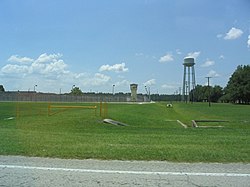
Raiford is a town in Union County, Florida, United States. The first Florida State Prison was established here. The town now is the site of three prisons. Union Correctional Institution holds the state death row for men.

San Quentin Rehabilitation Center (SQ), formerly known as San Quentin State Prison, is a California Department of Corrections and Rehabilitation state prison for men, located north of San Francisco in the unincorporated place of San Quentin in Marin County.

California State Prison, Corcoran (COR) is a male-only state prison located in the city of Corcoran, in Kings County, California. It is also known as Corcoran State Prison, CSP-C, CSP-COR, CSP-Corcoran, and Corcoran I. The facility is just north of the newer California Substance Abuse Treatment Facility and State Prison, Corcoran.
Florida State Prison (FSP), otherwise known as Raiford Prison, is a correctional institution located in unincorporated Bradford County, Florida, with a Starke postal address. It was formerly known as the "Florida State Prison-East Unit" as it was originally part of Florida State Prison near Raiford. The facility, a part of the Florida Department of Corrections, is located on State Road 16 right across the border from Union County. The institution opened in 1961, even though construction was not completed until 1968. With a maximum population of over 1,400 inmates, FSP is one of the largest prisons in the state. FSP houses Florida's one of two male death row cell blocks and the State of Florida execution chamber. Union Correctional Institution also houses male death row inmates while Lowell Annex houses female death row inmates.
Washington State Penitentiary is a Washington State Department of Corrections men's prison located in Walla Walla, Washington. With an operating capacity of 2,200, it is the largest prison in the state and is surrounded by wheat fields. It opened in 1886, three years before statehood.
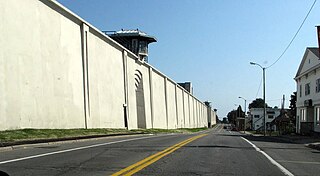
Clinton Correctional Facility is a New York State Department of Corrections and Community Supervision maximum security state prison for men located in the Village of Dannemora, New York. The prison is sometimes colloquially referred to as Dannemora, although its name is derived from its location in Clinton County, New York. The southern perimeter wall of the prison borders New York State Route 374. Church of St. Dismas, the Good Thief, a church built by inmates, is located within the walls. The prison is sometimes referred to as New York's Little Siberia, due to the cold winters in Dannemora and the isolation of the upstate area. It is the largest maximum-security prison and the third-oldest prison in New York. The staff includes about 1,000 officers and supervisors.
Five Points Correctional Facility (FPCF) is a maximum security state prison for men located in Romulus, New York, and operated by the New York State Department of Corrections and Community Supervision. Five Points is known as a supermax prison.
The El Dorado Correctional Facility is a maximum security prison located east of the city of El Dorado in rural Prospect Township, Butler County, Kansas, United States.
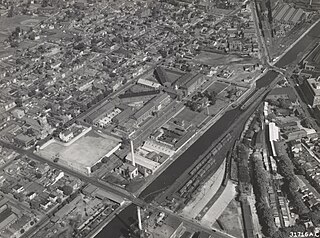
The New Jersey State Prison (NJSP), formerly known as Trenton State Prison, is a state men's prison in Trenton, New Jersey operated by the New Jersey Department of Corrections. It is the oldest prison in New Jersey and one of the oldest correctional facilities in the United States. It is the state's only completely maximum security institution, housing the most difficult and/or dangerous male offenders in the inmate population. NJSP operates two security units and provides a high level of custodial supervision and control. Professional treatment services, such as education and social work, are a priority at the facility. The Bureau of State Use Industries operated the bedding and clothing shops that were once located in Shop Hall at the facility. These industries have been relocated to South Woods State Prison.

Greensville Correctional Center is a prison facility located in unincorporated Greensville County, Virginia, near Jarratt. The prison, on a 1,105-acre (447 ha) plot of land, is operated by the Virginia Department of Corrections. Greensville houses the execution chamber that was used to carry out capital punishment by the Commonwealth of Virginia until the death penalty in Virginia was abolished in 2021.
Pontiac Correctional Center, established in June 1871, is an Illinois Department of Corrections maximum security prison for adult males in Pontiac, Illinois. The prison also has a medium security unit that houses medium to minimum security inmates and is classified as Level 3. Until the 2011 abolition of the death penalty in Illinois, the prison housed male death row inmates, but had no execution chamber. Inmates were executed at the Tamms Correctional Center. Although the capacity of the prison is 2172, it has an average daily population of approximately 2000 inmates.
The Riverbend Maximum Security Institution (RMSI) is a prison in Nashville, Tennessee, operated by the Tennessee Department of Correction. The prison opened in 1989 and replaced its 100-year-old neighbor, the Tennessee State Penitentiary. RMSI, which is made up by 20 different buildings, sits on 132 acres (0.53 km2) located off Cockrill Bend Boulevard in Nashville. Riverbend's designated capacity is 714 offenders. Of that number, 480 are classified as high risk.
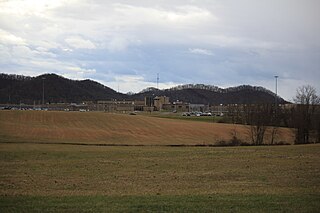
The Southern Ohio Correctional Facility is a maximum security prison located just outside Lucasville in Scioto County, Ohio. The prison was constructed in 1972. As of 2023, the warden is Cindy Davis.

Menard Correctional Center, known prior to 1970 as Southern Illinois Penitentiary, is an Illinois state prison located in the town of Chester in Randolph County, Illinois. It houses maximum-security and high-medium-security adult males. The average daily population as of 2007 was 3,410.

California Correctional Institution (CCI) is a supermax state prison in the city of Tehachapi in southern California. CCI is sometimes referred to as "Tehachapi prison" or "Tehachapi". As stated by the California Department of Corrections and Rehabilitation, its overall mission is "to incarcerate and control felons, while providing the opportunity for meaningful work, training and other programs. The prison provides programs for those inmates who are willing to work and participate fully in available programs."
The Broad River Correctional Institution (BRCI) is a South Carolina Department of Corrections state prison for men located in Columbia, South Carolina. South Carolina's execution chamber is located in Broad River. The adjacent Kirkland Correctional Institution lies just to its south side.
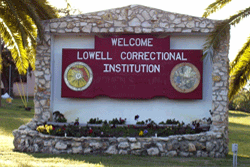
Lowell Correctional Institution is a women's prison in unincorporated Marion County, Florida, north of Ocala, in the unincorporated area of Lowell. A part of the Florida Department of Corrections, it serves as the primary prison for women in the state. Almost 3,000 women are incarcerated in the complex, which includes the Lowell Annex. As of 2015 2,696 women are in the main Lowell CI, making it the largest prison for women in the United States; its prison population became larger than that of the Central California Women's Facility that year.
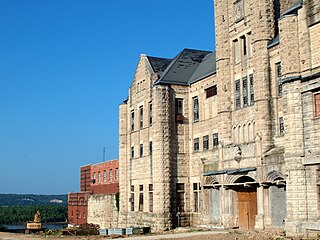
The Missouri State Penitentiary was a prison in Jefferson City, Missouri, that operated from 1836 to 2004. Part of the Missouri Department of Corrections, it served as the state of Missouri's primary maximum security institution. Before it closed, it was the oldest operating penal facility west of the Mississippi River. It was replaced by the Jefferson City Correctional Center, which opened on September 15, 2004.
The Debra K. Johnson Rehabilitation Center, formerly the Tennessee Prison for Women, is a Tennessee Department of Correction prison for women located in Nashville, Tennessee.
The Hardee Correctional Institution is a state prison for men located in Bowling Green, Hardee County, Florida, owned and operated by the Florida Department of Corrections. This facility has a mix of security levels, including minimum, medium, and close, and houses adult male offenders.
